2015 GMC Canyon Long-Term Review: Truck Functions 101

Welcome back to our 2015 GMC Canyon long-term test. To read the whole series, click here.
Horsepower and torque aren’t everything when it comes to working with pickup trucks. Much of a truck’s life will be spent sitting still while being loaded and unloaded. So before we even mention the powertrain, let’s look at how the GMC Canyon works while it’s in park.
Starting with the business end of the pickup truck, the Canyon offers four permanent tie-down spots in the corners of the bed. They are nicely sized rings that are fully coated with the spray-in bedliner, making them durable and easy to access. Unfortunately, they are a little low in the bed and that can occasionally lead to them being tough to reach depending on what you’re packing back there.
There is a solution. GM offers optional tie-down rings that can be installed higher up to solve the problem, though unfortunately our tester doesn’t have them.
A set of four tie-down rings are available through the brand’s accessory program for $100, money that you will want to spend. These tie-downs have 13 different fitment positions available, most of which are high up the bed wall, making them versatile and ready to tackle just about any tie-down job. A ton of other accessories are also offered for the truck, ranging from a bike rack to a ladder rack
Loading up a pile of freight into the bed is made easy by GM’s bumper-mounted step, a simple and effective solution for easy bed access. The step is at a convenient height for most people and is always ready for use. Plus they give the rear end of the Canyon a look that I’m fond of.
The spray-in bedliner in our test Canyon has so far been durable and useful. Hauling a massive pile of scrap wood complete with nails left few if any marks in our truck’s bed, while the coarseness of the liner does a great job of holding everything in place. Our truck’s long-bed measures in at 6’ 2” and hasn’t left us wanting more.
Out back, the Canyon accomplishes everything you’d want from a solid work truck. Interior hauling on the other hand isn’t as hassle free.
The back seats can be configured in two different forms for hauling cargo. The seat backs can flip down, creating a nearly flat load floor, or the seat bottoms can fold up, leaving a plastic bracket underneath. Both ways have merits and downsides. With the seat backs folded down, you have to lift whatever it is you are loading about 3-feet higher to get to the load floor, a feat that may not be so easy with heavy cargo.
On the flip side, folding the seat bottoms up leaves you with a partitioned storage area that is decent for smaller items, but would not work with larger stuff. In the Canyon’s larger twin the Sierra, the seat bottoms have no plastic structure underneath, so when folded up, the entire rear floor is accessible for packing full of stuff. It’s too bad the Canyon didn’t adopt that feature.
In the actual cabin of the truck, usability is good. The center console is deep, while two different spots to hold loose items are situated in the middle of the truck and a third spot for your loose change or nuts and bolts is found on the dash.
Overall, the GMC has proven to be a stalwart companion to work with. How does it drive though? Stay tuned for our next installment to hear more of our thoughts on the small truck.
As always, feel free to leave questions in the comments section below.
GALLERY: 2015 GMC Canyon SLT

Stephen covers all of the day-to-day events of the industry as the News Editor at AutoGuide, along with being the AG truck expert. His truck knowledge comes from working long days on the woodlot with pickups and driving straight trucks professionally. When not at his desk, Steve can be found playing his bass or riding his snowmobile or Sea-Doo. Find Stephen on <A title="@Selmer07 on Twitter" href="http://www.twitter.com/selmer07">Twitter</A> and <A title="Stephen on Google+" href="http://plus.google.com/117833131531784822251?rel=author">Google+</A>
More by Stephen Elmer


















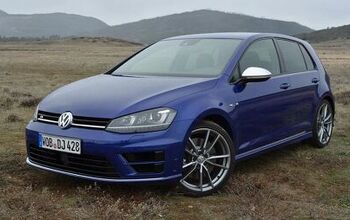
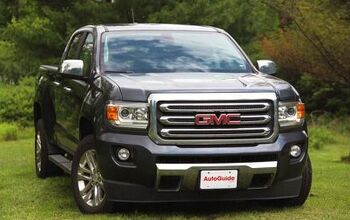
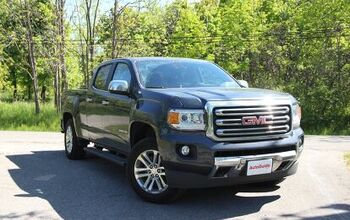
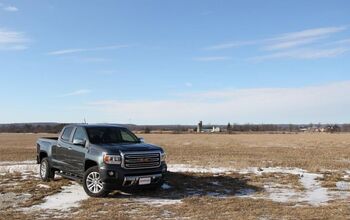


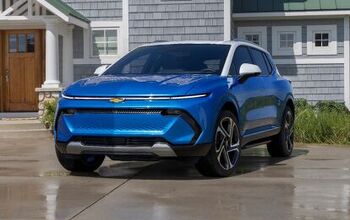




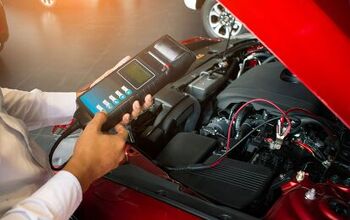

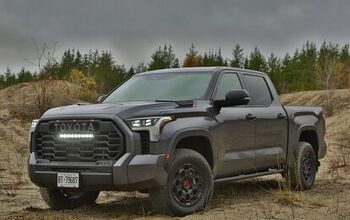

Comments
Join the conversation
I'm watching this test closely. I really want one but never buy a first year anything. I'll wait until the bugs get worked out and hopefully purchase a 2016.
Very interesting and practical testing. I'm sure I'm not the only truck owner who does not tow, and only occasionally carry near the 1/2 ton rated capacity. Looking forward to finding out how the diesel engine plays out, especially when comparing costs with MPG differences. Would also like to know if the 2015 turning radius in a 4WD model is better than in the 2009 Colorado crew cab.